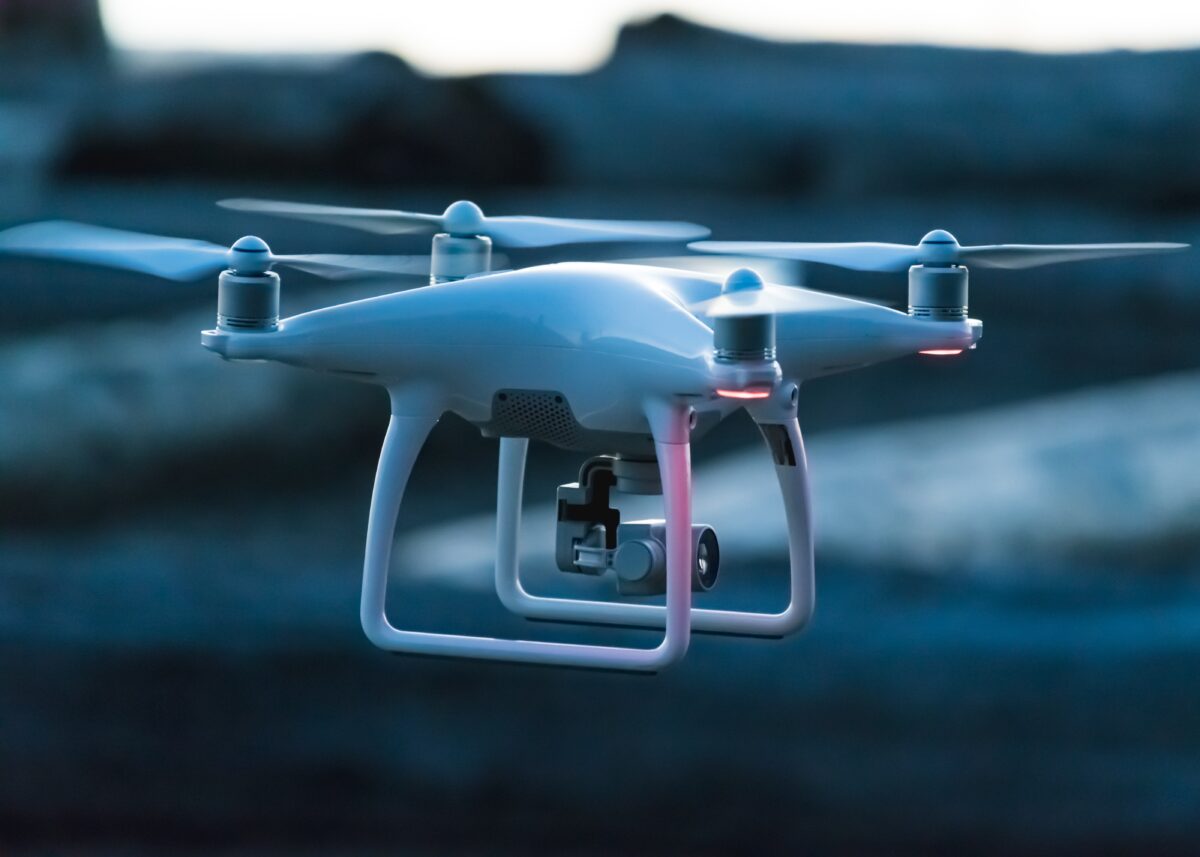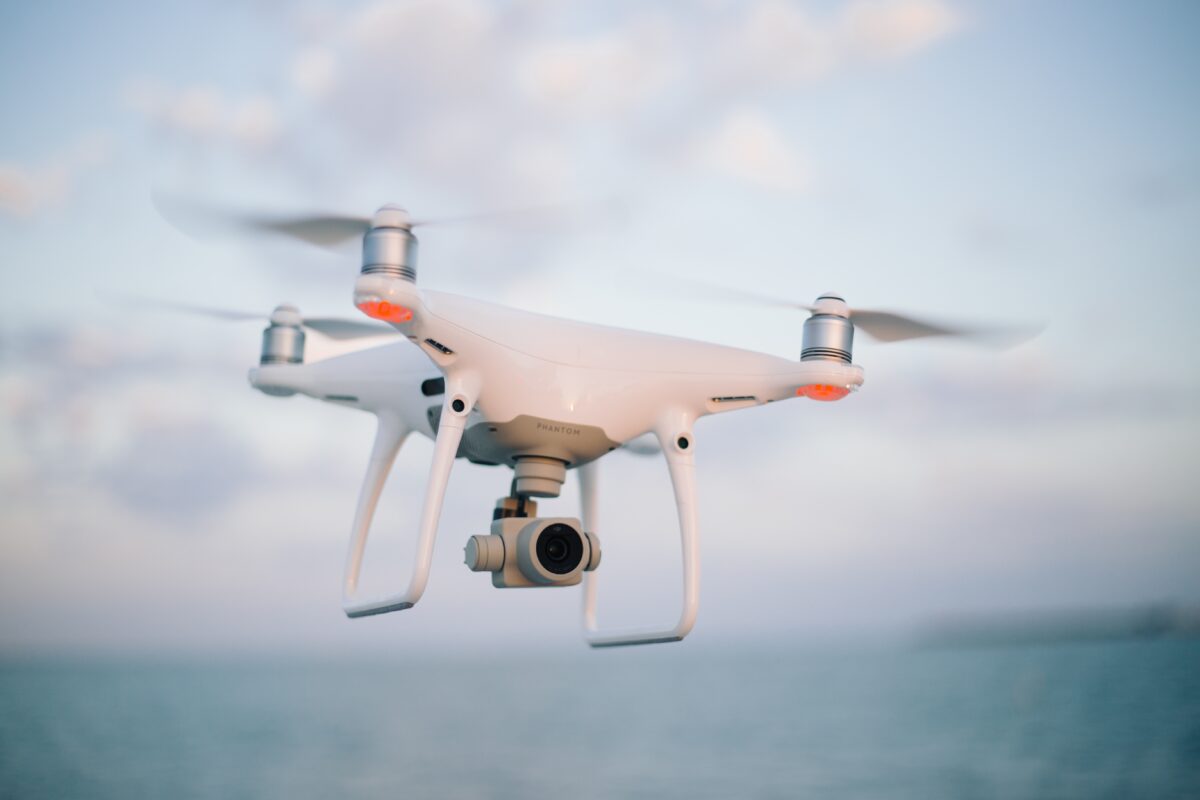Drone Basics: Understanding the Components, Functioning, and Applications of Drones
1.0 Introduction
Drones, also known as unmanned aerial vehicles (UAVs), are aircraft that are flown remotely without a human pilot onboard. Drones have become increasingly popular in recent years due to their versatility and ease of use. In this article, we will explore the basics of drones, including their components, how they work, legal and safety considerations, practical applications, and the future of this technology.
1.1 Definition of drones
A drone is an unmanned aircraft that is typically controlled by a pilot on the ground. Drones can be small enough to fit in the palm of your hand or as large as a commercial airliner. They are equipped with cameras, sensors, and other technology that allows them to perform a wide range of tasks.
1.2 Brief history of drones
Drones have been around for over a century, but it wasn’t until the 21st century that they became widely available to the public. The first recorded use of drones was during World War I, when the US military used unmanned balloons filled with explosives to attack enemy targets. In the 1950s, the US military began developing unmanned aircraft for reconnaissance missions. It wasn’t until the 1990s that drones began to be used for civilian purposes, such as aerial photography and surveying.
1.3 Types of drones
There are many different types of drones, each with its own unique features and capabilities. Some of the most common types of drones include:
- Quadcopters: These drones have four rotors and are the most common type of drone on the market. They are typically used for aerial photography and videography.
- Fixed-wing drones: These drones have a single wing and are designed to fly long distances. They are commonly used for mapping and surveying.
- Hexacopters: These drones have six rotors and are more stable than quadcopters. They are typically used for heavy lifting and industrial applications.
2.0 Components of a drone
Drones are made up of several components, each of which plays a crucial role in the functioning of the aircraft.
2.1 Frame
The frame of a drone is its physical structure. It is typically made of lightweight materials such as carbon fiber or plastic. The frame provides a structure for the other components of the drone to be mounted onto.
2.2 Motors and propellers
The motors and propellers of a drone are what allow it to fly. The motors spin the propellers, which generate lift and thrust. The number and size of the propellers depend on the type and size of the drone.
2.3 Flight controller
The flight controller is the brain of the drone. It is responsible for controlling the speed and direction of the motors, as well as stabilizing the drone in the air.
2.4 Battery
The battery is what powers the drone. It is typically a rechargeable lithium-ion battery and can range in size and capacity depending on the type of drone.
2.5 Remote controller
The remote controller is what the pilot uses to control the drone. It sends signals to the drone’s flight controller, which then translates those signals into movement of the drone.
2.6 Camera
Many drones come equipped with cameras, which allow them to capture aerial photographs and videos. The quality and capabilities of the camera depend on the type and model of the drone.
3.0 How drones fly
Drones fly using the same principles of aerodynamics as manned aircraft. The main forces that allow a drone to fly are lift and thrust.
3.1 Lift and thrust
Lift is the force that allows the drone to rise into the air. It is generated by the propellers spinning and creating a flow of air over the wings or rotors. Thrust is the force that propels the drone forward, and it is generated by the propellers pushing air behind them.
3.2 Aerodynamics of a drone
The shape and design of a drone’s wings or rotors affect its aerodynamics. Drones are designed to be as efficient as possible, with minimal drag and maximum lift.
3.3 Stabilization and control
To maintain stability in the air, drones use a variety of sensors, including gyroscopes and accelerometers. These sensors help the flight controller adjust the speed and direction of the motors to keep the drone level.
4.0 Legal and safety considerations
Flying a drone comes with a number of legal and safety considerations that need to be taken into account.
4.1 Drone regulations
Different countries and regions have different regulations regarding the use of drones. In the US, for example, drones must be registered with the Federal Aviation Administration (FAA) and flown below 400 feet in most areas.
4.2 Safety precautions
When flying a drone, it is important to take certain safety precautions. These include:
- Avoiding flying near airports or other restricted airspace
- Keeping the drone within sight at all times
- Not flying over people or animals
- Checking the weather conditions before flying
4.3 Flying etiquette
To be a responsible drone pilot, it is important to follow certain flying etiquette. This includes:
- Respecting people’s privacy and property
- Being courteous to other pilots and people on the ground
- Avoiding flying in sensitive areas such as national parks or wildlife reserves
5.0 Practical applications of drones
Drones have a wide range of practical applications, including:
5.1 Photography and videography
Drones are commonly used for aerial photography and videography, as they can capture stunning images and videos from unique perspectives.
5.2 Surveying and mapping
Drones can be used for mapping and surveying areas that are difficult or dangerous to access on foot. They can create highly detailed maps and 3D models of terrain, buildings, and other structures.
5.3 Agriculture
Drones are increasingly being used in agriculture to monitor crops and livestock. They can provide farmers with valuable data on plant health, irrigation, and soil quality.
5.4 Search and rescue
Drones can be used in search and rescue operations to locate missing people or animals. They can cover large areas quickly and provide valuable aerial footage to rescue teams.
5.5 Delivery services
Some companies are experimenting with using drones for package delivery. Drones can quickly and efficiently deliver packages to remote or hard-to-reach areas.
6.0 Future of drones
As technology continues to advance, the potential uses for drones will only continue to grow. Some of the most exciting developments in the world of drones include:
6.1 Technological advancements
New developments in sensors, cameras, and artificial intelligence are making drones more capable and versatile than ever before.
6.2 Potential impact on society
Drones have the potential to revolutionize many industries, from agriculture to delivery services. However, there are also concerns about the impact that widespread drone use could have on privacy and safety.
6.3 Integration with other technologies
Drones are being integrated with other technologies, such as virtual reality and augmented reality, to create new and innovative applications.
7.0 Conclusion
Drones are fascinating and versatile machines that have a wide range of practical applications. Understanding the basics of how they work and the legal and safety considerations involved in flying them is essential for anyone interested in using drones. As technology continues to advance, the potential uses for drones will only continue to grow, making them an exciting area to watch.
FAQs:
- Do I need a license to fly a drone?
In many countries, including the US, you need a license to fly a drone commercially. If you are flying a drone for recreational purposes, you may not need a license, but it is important to check the regulations in your area.
- What should I do if my drone crashes?
If your drone crashes, the first thing you should do is make sure that no one was injured. You should then check your drone for damage and make any necessary repairs.
- How do I get started with flying drones?
To get started with flying drones, you will need to purchase a drone and a remote controller. You should also familiarize yourself with the regulations and safety considerations involved in flying drones.
- What should I do if my drone gets stuck in a tree?
If your drone gets stuck in a tree, the best thing to do is to try to retrieve it safely. You should avoid climbing the tree or using tools that could damage the drone or the tree.
- Can drones be used for surveillance?
Drones can be used for surveillance, but there are legal and ethical considerations involved. It is important to follow the regulations and guidelines in your area and to respect people’s privacy.



